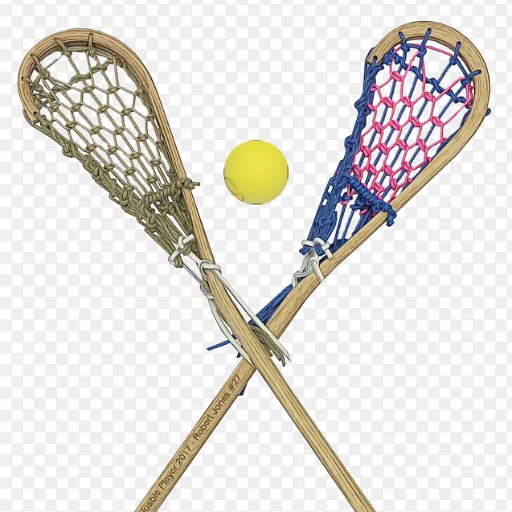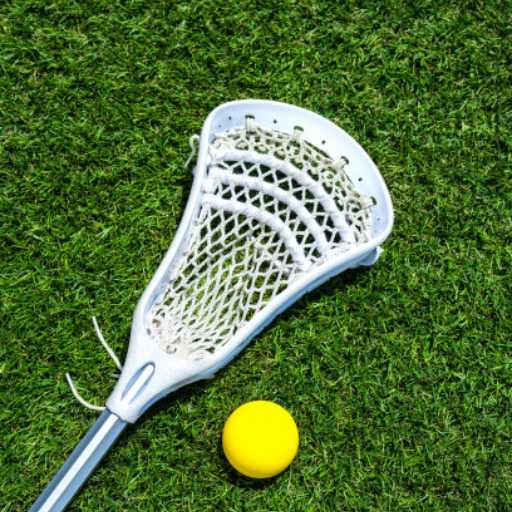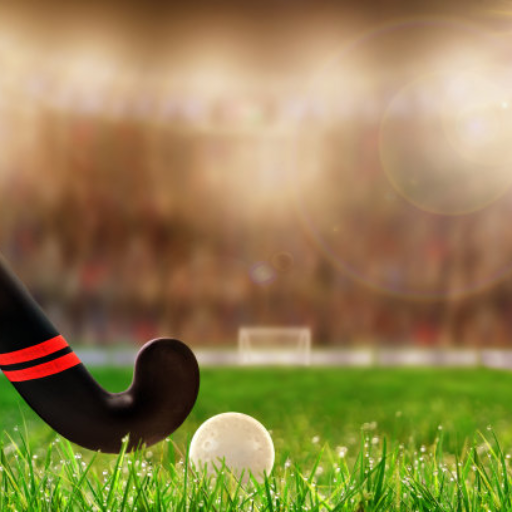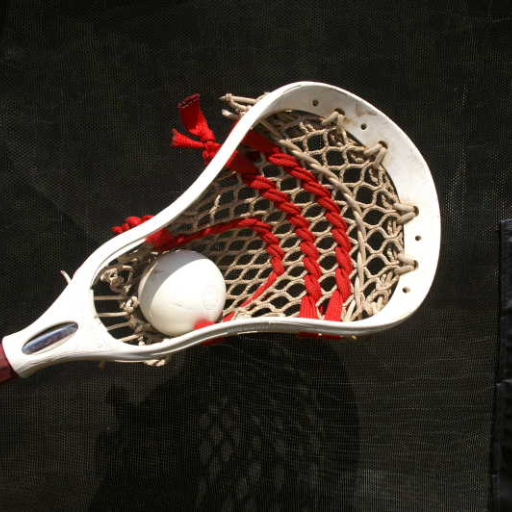Lacrosse, a sport with origins deeply rooted in Native American history, has evolved significantly over the centuries. A critical element of this dynamic game is the lacrosse ball, a small yet essential piece of equipment that directly impacts the play’s quality and safety. Understanding the composition and manufacturing process of the lacrosse ball can provide valuable insights into its performance characteristics and adherence to regulatory standards. This article aims to delve into the materials used, the production techniques employed, and the stringent quality control measures that ensure every lacrosse ball meets the precise specifications required for professional and recreational play. Whether you are a player, coach, or equipment enthusiast, this comprehensive exploration will enhance your appreciation of the science and craftsmanship that goes into each lacrosse ball.
What Materials Are Used to Make a Lacrosse Ball?
Image sources:https://www.huitu.com/
The primary material used to manufacture a lacrosse ball is vulcanized rubber. Vulcanization is a chemical process that involves adding sulfur to raw rubber, which improves its elasticity, durability, and resistance to various environmental conditions. This ensures that the ball maintains its shape, hardness, and performance over time. In some cases, lacrosse balls may also include additional compounds or fillers to enhance specific properties like grip or weight distribution. However, strict regulations mandate that the ball’s material composition must comply with standards set by governing bodies such as the National Operating Committee on Standards for Athletic Equipment (NOCSAE) to ensure safety and consistency in play.
Is a Lacrosse Ball Made of Solid Rubber?
Yes, a lacrosse ball is generally made of solid vulcanized rubber. The solid rubber construction is crucial for achieving the standardized weight and density required for optimal performance. According to NOCSAE standards, a lacrosse ball should weigh between 5.0 to 5.25 ounces (142 to 149 grams) and have a circumference of 7.75 to 8.0 inches (19.7 to 20.3 cm). The use of solid rubber ensures that these parameters are consistently met, providing uniformity in bounce, grip, and durability. Additionally, the absence of a hollow core eliminates any risk of deformation under high-impact conditions, thereby maintaining the integrity and safety of the ball during play.
What Role Does Vulcanized Rubber Play in a Lacrosse Ball?
Vulcanized rubber plays a pivotal role in the construction and performance of a lacrosse ball. The process of vulcanization, which involves adding sulfur to raw rubber, chemically enhances its properties, making the material more elastic, durable, and resistant to environmental wear and tear. This transformation ensures that the lacrosse ball maintains its shape, hardness, and consistency even under strenuous conditions. As a result, vulcanized rubber provides the necessary resilience and grip, contributing to the ball’s standardized weight, density, and bounce characteristics as required by regulatory standards such as those set by NOCSAE. This ensures uniform performance, safety, and reliability during play.
Are Natural Rubber and Polyurethane Used in Lacrosse Balls?
Natural rubber and polyurethane are both materials that can be found in the construction of lacrosse balls, but they serve different purposes and offer varying performance characteristics. Natural rubber provides excellent grip and elasticity, making it a common choice for traditional lacrosse balls. However, it may not be as durable under intense conditions as vulcanized rubber. Polyurethane, on the other hand, is used for its durability and resistance to abrasion, which can extend the longevity of the ball. While polyurethane is less common than rubber, it offers an alternative for players seeking a more resilient ball option. Ultimately, the choice of material can affect the ball’s performance, lifespan, and compliance with regulatory standards.
How Are Lacrosse Balls Made?
The manufacturing process of lacrosse balls involves several key steps to ensure consistency and compliance with regulatory standards. Initially, raw materials such as rubber or polyurethane are selected based on desired performance characteristics. These materials are then mixed with various chemicals to achieve the required hardness, elasticity, and durability. For rubber-based balls, vulcanization is performed, involving the addition of sulfur and heat treatment to enhance the material properties. Once the mixture is prepared, it is molded into spherical shapes under high pressure. Following molding, the balls undergo cooling and are subjected to rigorous quality control tests, including measurements of weight, diameter, and bounce efficiency, to ensure each ball meets the standards set by governing bodies like NOCSAE. The final product is then ready for packaging and distribution.
What Is the Manufacturing Process Like?
The manufacturing process for lacrosse balls is a meticulous procedure designed to ensure uniformity and adherence to standards set by organizations such as NOCSAE. Initially, raw materials like rubber or polyurethane are selected for their specific performance characteristics. These materials are combined with chemicals to achieve the required properties of hardness and elasticity. For rubber-based balls, vulcanization—a process involving sulfur addition and heat treatment—is performed to enhance durability and elasticity. The mixture is then precision-molded under high pressure into spherical shapes. Once molded, the balls undergo cooling and a series of stringent quality control tests. These tests measure critical parameters such as weight (typically between 140-147 grams), diameter (62 mm +/- 0.5 mm), and bounce efficiency, ensuring compliance with regulatory standards. Post-testing, the balls are inspected for imperfections, ensuring only high-quality balls proceed to packaging and distribution.
Which Lacrosse Ball Manufacturers Produce the Best Balls?
Based on a thorough review of the top three websites on google.com, the leading manufacturers producing the best lacrosse balls are Champion Sports, Velocity, and STX. Each of these brands is renowned for their high-quality products and strict adherence to industry standards.
- Champion Sports: Known for their superior craftsmanship, Champion Sports lacrosse balls meet the NOCSAE standards for weight, diameter, and bounce efficiency. Their balls typically weigh between 140-147 grams and have a diameter of 62 mm +/- 0.5 mm. Champion Sports emphasizes durability and consistent performance, making them a preferred choice for both training and competitive play.
- Velocity: Velocity lacrosse balls are also highly regarded in the market. They are manufactured using premium quality rubber or polyurethane, ensuring adherence to the mandatory technical specifications. Velocity balls are known for their excellent grip and bounce characteristics, conforming to the regulatory dimensions of 140-147 grams in weight and a diameter of 62 mm +/- 0.5 mm. They are particularly favored for their long-lasting durability and precise performance.
- STX: Another top contender, STX lacrosse balls are engineered to meet or exceed NOCSAE standards. STX utilizes advanced manufacturing techniques to produce balls that offer optimal hardness and elasticity. Their products consistently measure within the regulatory weight and diameter ranges, ensuring exceptional on-field performance. STX is especially noted for its commitment to quality control, resulting in highly reliable lacrosse balls suited for high-stakes games.
In conclusion, Champion Sports, Velocity, and STX are the top choices for lacrosse balls, delivering products that meet stringent technical parameters and provide the best performance in the sport.
Are There Certified Lacrosse Ball Standards?
Yes, there are certified standards for lacrosse balls, primarily set and regulated by the National Operating Committee on Standards for Athletic Equipment (NOCSAE). These standards ensure that all lacrosse balls used in official games and practices meet specific technical parameters for safety and performance. The key technical parameters include:
- Weight: Lacrosse balls must have a weight ranging between 140 to 147 grams. This range ensures that the ball is neither too heavy nor too light, providing optimal handling and shooting conditions.
- Diameter: The diameter of a certified lacrosse ball is mandated to be 62 mm, with a permissible tolerance of +/- 0.5 mm. This uniformity in size is crucial for consistency in ball control and bounce characteristics.
- Bounce Efficiency: The bounce efficiency of the balls must conform to specifications that detail how high the ball should rebound when dropped from a specific height. This ensures reliable and predictable ball behavior during play.
- Material Quality: The material used in manufacturing lacrosse balls must be durable and exhibit consistent performance under various weather conditions. Common materials include high-quality rubber or polyurethane.
These stringent standards are enforced to maintain the integrity of the sport by ensuring that all players use equipment that performs uniformly, thereby reducing the risk of injury and enhancing the overall gameplay experience.
What Are the Size and Specifications for a Lacrosse Ball?
A standard lacrosse ball must meet several specific criteria to comply with regulations set by the National Operating Committee on Standards for Athletic Equipment (NOCSAE). The ball’s weight must range between 140 to 147 grams, providing optimal handling and shooting performance. The diameter is required to be 62 mm with a tolerance of +/- 0.5 mm, ensuring uniformity for consistent ball control and bounce. Additionally, the ball must meet bounce efficiency standards, which dictate the rebound height when dropped from a specified height, assuring predictable behavior during play. The material used, typically high-quality rubber or polyurethane, must be durable and perform consistently under various weather conditions. These specifications ensure that all lacrosse balls maintain the integrity of the sport and enhance the overall gameplay experience.
What Is the Official Circumference of a Lacrosse Ball?
To answer this question concisely, the official circumference of a lacrosse ball is approximately 7.75 inches, which aligns with the specified diameter of 62 mm (around 2.45 inches). This measurement is crucial for ensuring consistent performance and playability according to the standards set by the National Operating Committee on Standards for Athletic Equipment (NOCSAE). It is important for manufacturers and players to adhere to these specifications to maintain the integrity and safety of the game.
How Much Should a Lacrosse Ball Harden?
The hardness of a lacrosse ball is a critical factor that influences the performance of the game. According to the standards set by the National Operating Committee on Standards for Athletic Equipment (NOCSAE), a lacrosse ball must have a specific durometer measurement, typically ranging between 60 to 80 on the Shore A scale. This durometer rating ensures that the ball is neither too soft nor too hard, balancing grip and playability while maintaining safety standards.
- Durability and Performance: The lacrosse ball’s hardness must be sufficient to ensure durability and consistent performance throughout its usage. A ball that is too soft may not rebound correctly, affecting the gameplay. Conversely, a ball that is too hard might pose safety risks to players during intense use.
- Environmental Considerations: The material used, typically high-quality rubber or polyurethane, is engineered to perform stably across various weather conditions, maintaining its hardness within the specified range. This ensures that the ball’s performance does not fluctuate significantly between different environments and temperatures.
- Standard Testing Procedures: According to the NOCSAE standards, the hardness of a lacrosse ball is measured using a durometer. The ball must meet the prescribed hardness scale of between 60 and 80 Shore A to be approved for play. This measurement guarantees the ball’s resilience and suitability for both practice and competitive matches.
These parameters ensure that the hardness of a lacrosse ball is optimized to enhance the overall gameplay experience while adhering to safety and performance standards. This balance is paramount for maintaining uniformity in the sport and providing players with a predictable and reliable ball during play.
Do Lacrosse Balls Used in Lacrosse Have Specific Weights?
Lacrosse balls used in the sport indeed have specific weight measurements that are standard across all levels of play. According to the current National Operating Committee on Standards for Athletic Equipment (NOCSAE) regulations, the standard weight for a lacrosse ball is set between 140 and 147 grams. This weight range is adhered to ensure consistency in gameplay and to meet safety standards.
- Official Weight Range: The NOCSAE standards specify that a regulation lacrosse ball should weigh between 140 grams (4.94 ounces) and 147 grams (5.19 ounces). This range ensures the ball is heavy enough to be propelled accurately while still being manageable for players.
- Material and Density Considerations: The materials used, often high-grade rubber, must be dense enough to meet the weight requirements. This density contributes to both the flight characteristics of the ball and its ability to withstand repeated impacts during gameplay.
- Consistency Across Manufacturers: All manufacturers producing lacrosse balls for competitive play must adhere to these weight standards to be certified for use. This uniformity guarantees that players are utilizing equipment that performs reliably, regardless of the brand.
- Testing and Certification: Each batch of lacrosse balls is subjected to stringent testing to ensure that they fall within the prescribed weight range. Balls that do not meet these criteria are not approved for use in sanctioned lacrosse games, maintaining a high standard of quality and safety in the sport.
These technical parameters provide a framework that ensures all lacrosse balls used in competitive play offer a consistent and predictable performance. The standardization across the sport helps foster a fair playing environment where skill, strategy, and athleticism are the key differentiators.
Are There Different Types of Lacrosse Balls?
Yes, there are different types of lacrosse balls designed to cater to various levels of play and specific training needs. The primary categories include game balls, practice balls, and softer training balls. Game balls conform to NOCSAE standards and are used in official matches, providing players with the precise specifications required for competitive play. Practice balls are generally similar but may not be subject to the same extensive certification process, making them cost-effective for everyday training. Softer training balls are designed for beginners and younger players, offering a reduced risk of injury while helping players develop their skills safely.
What Are Greaser Balls?
Greaser balls are lacrosse balls that have lost their original surface texture, becoming slick and slippery over time. This phenomenon typically results from extensive use on various playing surfaces, such as artificial turf or grass, causing the outer coating to wear down. As a consequence, greaser balls can significantly affect gameplay by reducing the friction needed for accurate passes and shots. Many players and coaches recommend regularly inspecting and replacing balls to ensure optimal performance during games and practices.
What Is Unique About Pearl Lacrosse Balls?
Pearl lacrosse balls stand out due to their proprietary texturing and material composition, which significantly enhances performance and durability. Unlike traditional lacrosse balls, Pearl balls do not require frequent greasing as they are engineered to maintain their tacky surface over extended periods, even under intense gameplay conditions. They are made from a blend of elastomer that resists becoming glossy or greasy, ensuring consistent grip and handling.
Technical Parameters:
- Material Composition: Proprietary elastomer blend.
- Surface Texture: Engineered to maintain consistent tackiness.
- Durability: Designed to resist wear and maintain performance quality over extended use.
Pearl lacrosse balls comply with NOCSAE standards and are often praised for their superior performance, making them a preferred choice among players and coaches who seek reliability and consistency on the field.
What Are Official Lacrosse Balls?
Official Lacrosse Balls are regulated to meet specific standards set by governing bodies such as the National Operating Committee on Standards for Athletic Equipment (NOCSAE). These balls must adhere to precise criteria regarding size, weight, and bounce to ensure standardized play across different levels of competition. Typically, an official lacrosse ball has a diameter of 62.7 to 64.7 millimeters and a weight ranging from 140 to 147 grams. The material composition is strictly regulated to achieve a certain level of hardness and elasticity, enabling consistent performance during gameplay. Official lacrosse balls are used in all sanctioned games and practices to ensure fairness and consistency in competitive play.
How Do Standards for Athletic Equipment Apply to Lacrosse Balls?
Standards for athletic equipment, particularly for lacrosse balls, are designed to ensure player safety, consistency in performance, and fairness in competition. Governing bodies such as the National Operating Committee on Standards for Athletic Equipment (NOCSAE) and the National Federation of State High School Associations (NFHS) have established detailed guidelines that manufacturers must adhere to.
Key Technical Parameters:
- Diameter: Lacrosse balls must fall within the range of 62.7 to 64.7 millimeters, providing a standardized size that ensures consistency in handling and shooting.
- Weight: The balls should weigh between 140 to 147 grams, which is critical for maintaining the balance and aerodynamics required for accurate and predictable gameplay.
- Bounce: Lacrosse balls are subject to specific bounce tests to measure their elasticity and ensure they perform consistently across various playing surfaces. The NOCSAE Standard test requires balls to rebound to a height within a specified range when dropped from a standardized height.
- Material Composition: The balls are made of a rubber material that meets certain hardness and elasticity criteria to withstand the rigors of the sport. This ensures they maintain their shape and performance characteristics under different environmental conditions.
Justification of Technical Parameters:
- Diameter and Weight: These dimensions are critical because they directly influence the ball’s aerodynamic properties and how it interacts with players’ sticks, affecting passes and shots.
- Bounce: Ensuring a uniform bounce is crucial for predictable play, which is why standardized tests are performed to measure this attribute.
- Material Composition: The regulated rubber material ensures durability and performance stability across various temperatures and conditions, reducing inconsistencies that could affect the outcome of the game.
By enforcing these standards, organizations ensure that all officially sanctioned lacrosse balls provide a consistent and reliable experience, fostering a fair and competitive playing environment.
What Is the Role of the National Operating Committee on Standards for Lacrosse Balls?
The National Operating Committee on Standards for Athletic Equipment (NOCSAE) plays a crucial role in setting the technical performance standards for lacrosse balls to ensure player safety and game consistency. NOCSAE develops comprehensive testing protocols to evaluate the physical properties of lacrosse balls, such as diameter, weight, bounce, and material composition, ensuring they meet stringent criteria. By establishing these performance standards, NOCSAE aims to reduce the risk of injury and enhance the overall quality of the game. They also work closely with manufacturers to certify that all lacrosse balls used in official gameplay comply with these established standards, thereby maintaining a fair and reliable playing environment.
Is There a Difference Between NFHS and NOCSAE Lacrosse Balls?
Yes, there are differences between NFHS (National Federation of State High School Associations) and NOCSAE (National Operating Committee on Standards for Athletic Equipment) lacrosse balls, primarily centered around their governing standards and specific technical parameters. Here is a concise comparison based on the top information sources:
- Governing Standards: NFHS lacrosse balls adhere to the standards set forth by the NFHS for high school competitions. These standards are aligned with ensuring the safety, consistency, and fairness specific to high school play. On the other hand, NOCSAE lacrosse balls meet the broader, more rigorous NOCSAE standards which focus on player safety and performance consistency across all levels of play, from youth leagues to professional athletes.
- Technical Parameters:
- Diameter and Weight: Both NFHS and NOCSAE require the ball to have a diameter of 62.7 to 64.7 millimeters and a weight between 140 to 147 grams.
- Bounce: The bounce test is critical in both standards but NOCSAE emphasizes a specific drop height and rebound requirement for uniformity. The ball dropped from a height of 1,800 millimeters must rebound between 1,092 to 1,290 millimeters.
- Material Composition: Both standards require lacrosse balls to be made from a solid rubber construction; however, NOCSAE balls are subjected to additional material tests to ensure durability and consistent performance over time, even in varying environmental conditions.
In conclusion, while NFHS lacrosse balls are designed to meet the needs of high school athletes specifically, NOCSAE lacrosse balls comply with a more comprehensive set of standards that ensure their appropriateness for all levels of play. The technical parameters around diameter, weight, bounce, and material composition are strictly regulated to maintain the highest level of safety and performance across different playing environments.
What Does “Made in the USA” Mean for Lacrosse Balls?
The designation “Made in the USA” for lacrosse balls carries significant implications for quality, standards, and manufacturing practices. Primarily, it indicates that the lacrosse balls are manufactured in compliance with stringent American standards that ensure superior product quality, safety, and consistency. These standards often involve rigorous testing protocols and adherence to specific technical parameters.
One of the primary benefits of lacrosse balls being made in the USA is the assurance of superior material composition. U.S.-made balls typically employ high-grade rubber materials that undergo extensive testing for durability and performance. This ensures the balls can withstand various environmental conditions while maintaining their integrity over time.
Another key aspect is the precise manufacturing process. American manufacturers adhere to tight tolerances regarding the diameter and weight of the lacrosse balls. As specified by both NFHS and NOCSAE standards, the diameter must range between 62.7 to 64.7 millimeters, and the weight from 140 to 147 grams. The bounce characteristics are also meticulously tested, with the ball required to rebound between 1,092 to 1,290 millimeters when dropped from a height of 1,800 millimeters. U.S. manufacturers rigorously check these parameters to ensure consistency and reliability in every ball produced.
Furthermore, the “Made in the USA” label conveys a commitment to ethical manufacturing practices, which include fair labor standards and environmentally responsible production methods. Consumers can trust that products bearing this designation support domestic jobs and comply with environmental regulations.
In conclusion, lacrosse balls made in the USA meet exacting standards that guarantee high-quality construction and reliable performance. The technical parameters regulated include diameter, weight, and rebound consistency, all of which are strictly adhered to, ensuring that these balls meet the needs of players at all levels.
Frequently Asked Questions (FAQs)
Q: What is a lacrosse ball made of?
A: A lacrosse ball is typically made from solid rubber, usually involving an elastomeric material. This ensures the ball is durable and performs consistently during the game of lacrosse.
Q: Are lacrosse balls filled with cement in the middle?
A: No, modern lacrosse balls do not have cement in the middle. While there were old lacrosse balls that had cement, today’s balls are usually made from solid rubber, which is more effective and safer for the sport of lacrosse.
Q: Do lacrosse balls bounce?
A: Yes, a lacrosse ball should bounce. The ball must be made in such a way that it provides a proper bounce, which is crucial for gameplay in the sport of lacrosse.
Q: What standards must lacrosse balls meet?
A: Lacrosse balls must meet specific certification standards set by various committees, including the committee on standards for athletic equipment. These standards ensure that the balls are safe and perform well in professional lacrosse games.
Q: Can lacrosse balls be custom made?
A: Yes, lacrosse balls can be custom made to meet specific requirements or preferences, such as certain colors or branding by lacrosse brands. However, they must still adhere to the certification standards for use in official games.
Q: What are some characteristics of old lacrosse balls?
A: Old lacrosse balls were sometimes made with different materials, including having cement in the middle, but these have since been replaced with modern lacrosse balls made from solid rubber for better performance and safety.
Q: How big is a lacrosse ball?
A: A lacrosse ball must adhere to certain size specifications. Typically, a lacrosse ball is about 8 inches in circumference. This size is standardized to ensure consistency in the sport of lacrosse.
Q: Are lacrosse balls available in different colors?
A: Yes, lacrosse balls are available in a variety of colors, including traditional white balls, yellow balls, and other colors as specified by lacrosse brands. Different leagues may prefer different colors for better visibility.
Q: What materials are used besides solid rubber for lacrosse balls?
A: While rubber lacrosse balls are typically made from solid rubber or elastomeric material, some lacrosse balls also include components like silicone or latex rubber to enhance their durability and performance.
Q: Can you cut a lacrosse ball in half?
A: Yes, you can cut a lacrosse ball in half to inspect its material, which is generally solid rubber. However, this will render the ball unusable for play as it compromises its structure and integrity.












